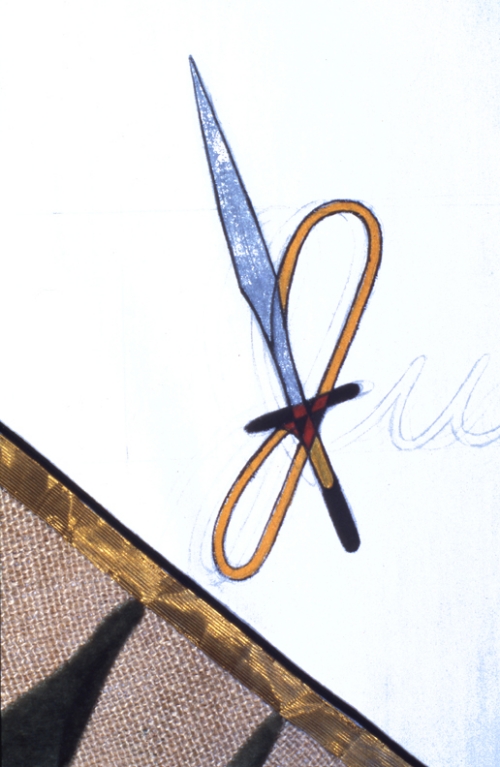Judith
(Biblical)
Judith, whose name translates from the Hebrew as “Jewess” or “Praised,” was a widow of noble rank living in the Jewish city of Bethulia during 6th century B.C.E. During the time when the city was under attack by the Assyrian army headed by Holofernes, Judith is said to have devised a plan to reclaim her land for her people.
Pretending to flee the land of the Israelites, she requested a meeting with Holofernes to discuss a strategy to help his army win. Holofernes was mesmerized by the noblewoman’s great beauty and her desire to serve his army, and he invited her to remain as his guest. After a feast, when she was left alone with the intoxicated general, she and her maid decapitated him with his own sword and carried his head back to the Bethulian people. Her act restored the Israelites’ strength and courage and caused chaos within the Assyrian army. The army quickly fled, and the people of Bethulia were left in peace.
Judith’s story has not fully been accepted as history. Many scholars believe that it is a fictionalization of historical events, while others believe it can be read as a parable. It is not included in the Hebrew Bible, but is in the ancient Greek Septuagint, the earliest translation of the Hebrew Bible, as well as the Roman Catholic and Orthodox Christian Old Testaments.
This heroic tale has been depicted throughout history by countless artists, including Donatello, Botticelli, Titian, Michelangelo, and Caravaggio, among others. Perhaps the best-known artistic representation is Artemisia Gentileschi‘s Judith Beheading Holofernes, 1612–13, painted by one of the first women to take on religious and heroic themes.
Judith at The Dinner Party
Judith’s place setting combines symbols of Middle Eastern traditions with symbols of femininity. Historically, Jewish women utilized the needlework techniques of their nation of residence. The runner, therefore, evokes the intricate headdress known as a gargush, traditionally worn by a Yemenite bride. The gold threading, cords, and coins in the runner suggest the Middle Eastern custom of displaying the bride’s dowry to demonstrate her family’s wealth and her value as a commodity.
Central to the runner is a bold, triangular belt buckle similar to those used as ornamentation on ancient Hebrew clothing. The triangle is used here as a symbol of Judith’s strength and her loyalty to her sex. On top of the runner, appearing vertically on either side of Judith’s plate, are Hebrew letters proclaiming Judith’s bravery on behalf of the people of Bethulia. Translated they read, “Judith, heroine to her people.” Judith’s name is slashed by a sword, which represents the weapon used to kill Holofernes.
Judith’s plate features a floral design with leaves, whose edges create curved dark and light triangles like those on the front of the runner. The combination of dark and bright colors echoes the colors of the runner and the dramatic play of light and dark in Gentileschi‘s Baroque painting depicting the event.
Primary Sources
Bible: The Book of Judith
Translations, Editions, and Secondary Sources
Anderson, Jaynie. Judith. Paris: Editions du Regard, 1997.
Bach, Alice, ed. Women in the Hebrew Bible: A Reader. London and New York: Routledge, 1999.
Brenner, Athalya. The Israelite Woman: Social Role and Literary Type in Biblical Narrative. Sheffield, UK: JSOT Press, 1985.
—-, ed. A Feminist Companion to Esther, Judith and Susanna. Sheffield, UK: Sheffield Academic Press, 1995.
Carmody, Denise Lardner. Biblical Woman: Contemporary Reflections on Scriptural Texts. New York: Crossroad, 1988.
Griffith, Mark, ed. Judith. Exeter: University of Exeter Press, 1997.
Hammer, Jill. Sisters at Sinai: New Tales of Biblical Women. Philadelphia: Jewish Publication Society, 2001.
Pardes, Ilana. Countertraditions in the Bible: A Feminist Approach. Cambridge, Mass.: Harvard University Press, 1992.
Stocker, Margarita. Judith, Sexual Warrior: Women and Power in Western Culture. New Haven: Yale University Press, 1998.
Vanderkam, James C., ed. No One Spoke Ill of Her: Essays on Judith. Atlanta: Scholars Press, 1992.

Judy Chicago. Drawing for Judith Illuminated Letter on runner, 1979. Mixed media, approx. 12 × 9 in. (30.5 × 22.9 cm). © Judy Chicago. (Photo: © Donald Woodman)
Place Setting Images

Judy Chicago (American, b. 1939). The Dinner Party (Judith runner), 1974–79. Cotton/linen base fabric, woven interface support material (horsehair, wool, and linen), cotton twill tape, silk, synthetic gold cord, velvet, wool, glass beads, etched 14-gauge sheet metal, couched cord, thread, 53 5/8 × 30 1/8 in. (136.2 × 76.5 cm). Brooklyn Museum, Gift of the Elizabeth A. Sackler Foundation, 2002.10. © Judy Chicago

Judy Chicago (American, b. 1939). The Dinner Party (Judith plate), 1974–79. Porcelain with overglaze enamel (China paint), 14 × 15 × 1 in. (35.6 × 38.1 × 2.5 cm). Brooklyn Museum, Gift of the Elizabeth A. Sackler Foundation, 2002.10. © Judy Chicago. (Photo: © Donald Woodman)
Biographical Images
Related Heritage Floor Entries
Web Resources
The Book of Judith online
JewishEncyclopedia.com: Book of Judith
